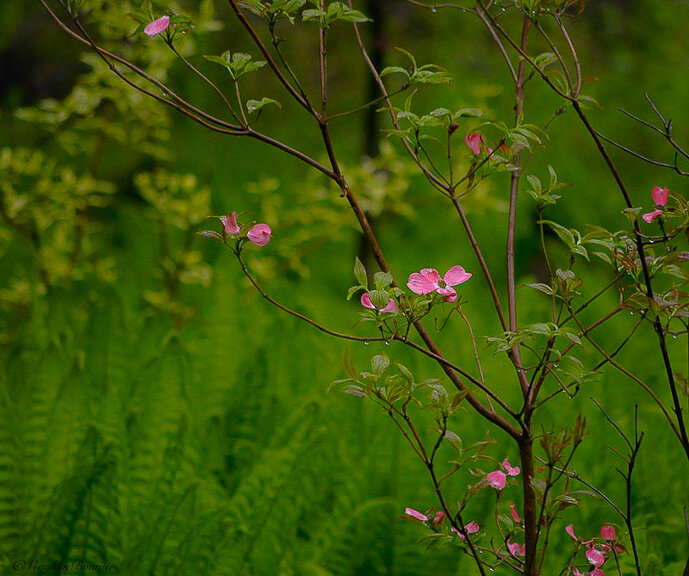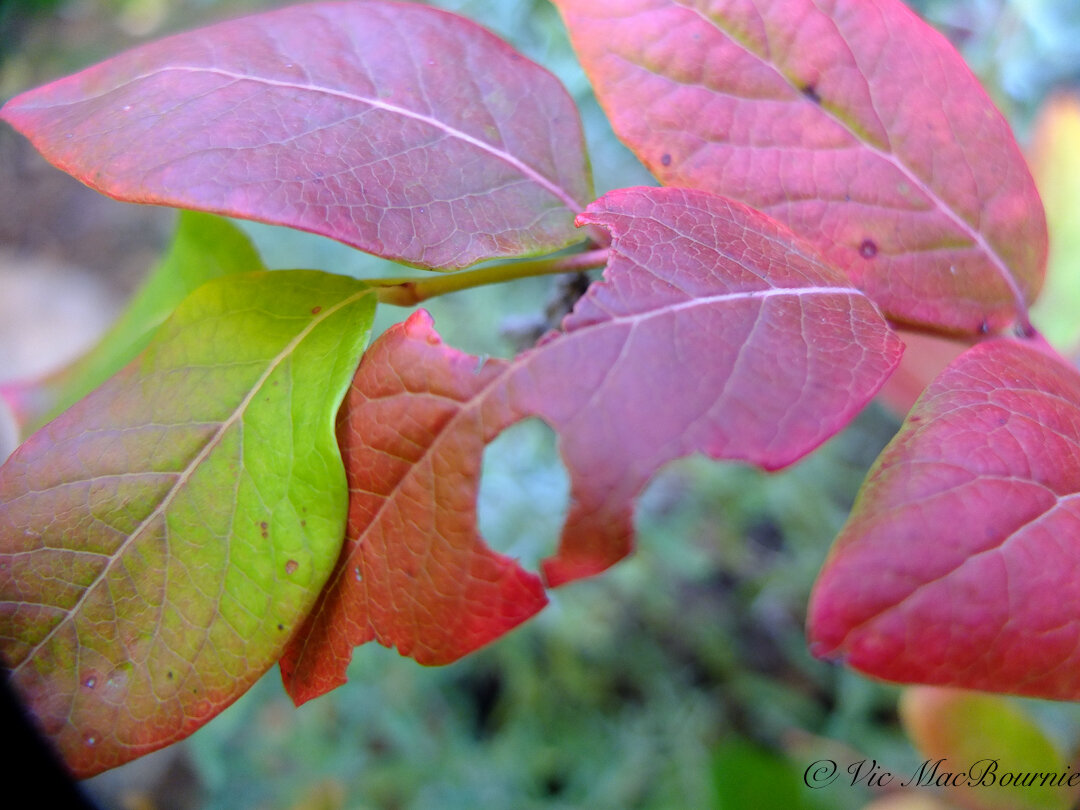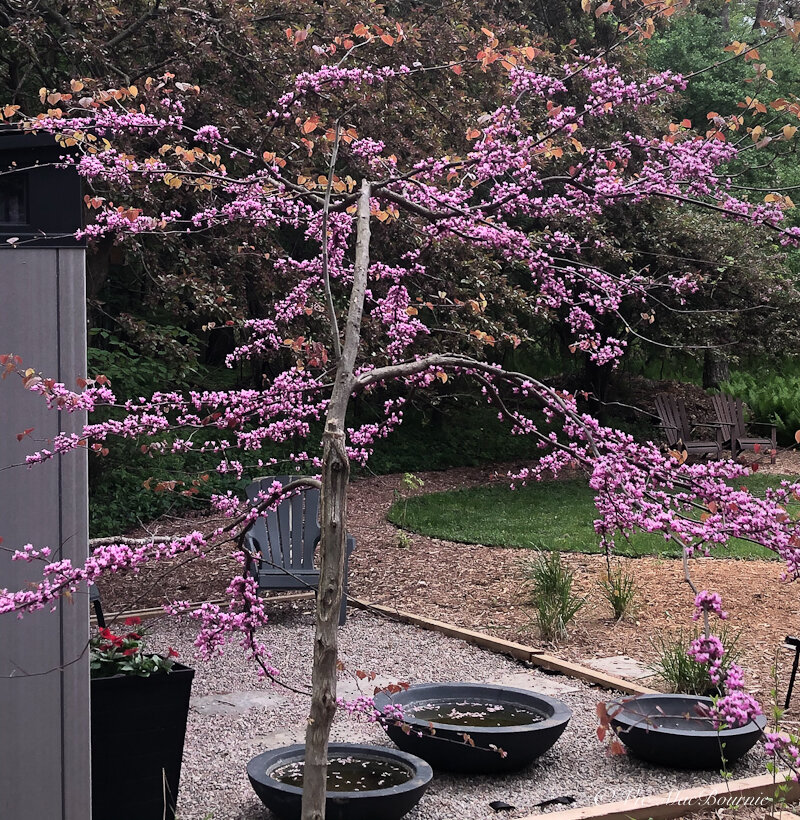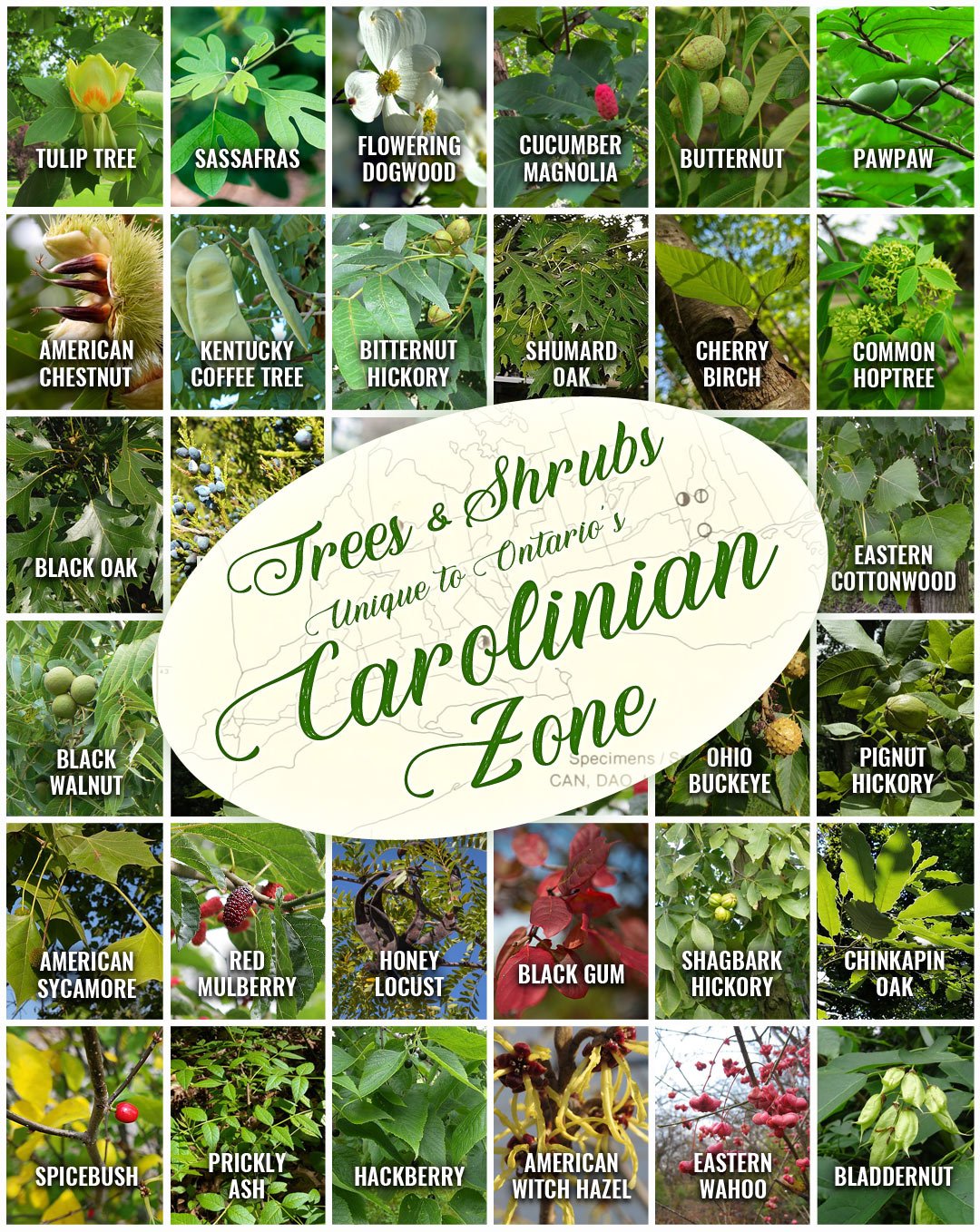Three of the best Carolinian under story trees (perfect for small yards)
If you are lucky enough to live in the Carolinian forest zone in Ontario or the United States you are able to grow some of the finest understory trees. Here are three of the best understory trees, Redbud, dogwood and Pawpaw. They are small trees perfect for today’s smaller backyards.
Native trees need to be in our gardens
If you are lucky enough to live in the Carolinian zone your garden can be home to a host of exceptional native trees unavailable to many gardeners in colder regions of Canada and the United States.
The Carolinian Canada zone in southern Ontario is characterized by the predominance of deciduous trees and actually stretches well into the United States from the Carolinas, through the Virginias, Kentucky, Tennessee, Maryland, Delaware, Pennsylvania, parts of Ohio and New York state to name just a few.
Dogwood among the ferns in the back woodland garden.
In Canada it includes gardening zones 6-7 and shares many of the same animals, trees, flowers and shrubs.
Trees in the Carolinian zone include upper story trees such as oak, hickory, tulip tree and walnut.
But what are the best native understory trees in the Carolinian zone? Carolinian forest understory trees are among the finest and most showy of the available smaller trees, and most would consider the dogwood and redbud to be the showiest. I’m suggesting the Paw Paw to round out the top three for its outstanding fruit production.
(For more on the importance of native plants, trees and shrubs in our gardens, go here.)
These understory trees are ideal for smaller backyards that are common in many of today’s urban and suburban yards.
Let’s take a look at three of the best.
This image illustrates the work of our native carpenter bees who use the Redbud leaves of the Forest Pansy cultivar for their nests. The leaves are just beginning to turn colour for their autumn show.
Redbud (Cercis Canadensis)
The Eastern Redbud, is a hardy understory tree that grows in zones 4-9. It is native to Southern Ontario and is found throughout most of the United States from Florida through to California.
It grows to about 30 feet high with a spread of 35 feet and is available both as a single-stem tree or a multi-stem tree. It has a rounded canopy and tolerates clay soil and the presence of Black Walnut.
My experience is that deer primarily leave the tree alone and outside information seems to back up my findings. So if you are in deer country, put this tree on your list. It’s always a good idea, however, to buy them large enough that deer cannot reach the upper part of the tree.
Redbuds are easily grown in average, medium moisture, in well-drained soils in full sun to part shade.
It is prized for its spectacular early spring bloom of a profusion of tiny pink flowers that lasts for weeks covering the branches prior to the heart-shaped leaves emerge. The result is a stunning early spring display that is really unmatched by any other tree accept maybe the native Florida dogwood which pairs perfectly with the native Redbuds.
One of our Redbuds in full bloom. This is the Forest Pansy that grows beside our shed and provides beautiful magenta/pink blooms against the grey walls of the shed in early spring.
Once the flowers fade the heart-shaped, dark green leaves emerge and remain throughout the summer. The leaves, a favourite for carpenter bees, will eventually put on an impressive fall show of bright, harvest-yellow leaves before falling to the ground. Small, purplish seed pods remain on the tree for a while providing winter interest.
The tree blooms on the previous year’s growth, so it’s best to prune the tree in early spring, after the blooms fade and before it sets bud for next year.
In the wild, the tree is found in woodlands and along creek beds and rivers where it grows as an understory tree in the shade of taller hardwoods and conifers.
In your garden, it can be grown as a specimen or in small groups and woodland margins in a naturalized setting. It is the perfect small tree to grow near a patio or deck.
There are a number of cultivars available including “Appalachian Red” a smaller red flowered variety (zones 4-9), “Ace of Hearts” a more compact form with a dense, domed shaped canopy growing to 12 feet with a 15-foot wide canopy, “Silver cloud” a variegated form of soft green leaves blotched with white that are slightly smaller than the species plants, “Covey” is a small weeping cultivar with a dense umbrella-shaped crown with contorted stems and arching to pendulous branches. Covey is particularly good for small yards or beside patios and decks.
“Forest Pansy” is a purple leaved cultivar. It is one of the most popular cultivars both for its spring show of flowers and its fall show where leaves turn shades of reddish-purple and orange. In cooler climates, the trees foliage retains its rusty/burgundy colour throughout the summer. You can read one of my earlier posts on the Forest Pansy cultivar here.
Dogwood (Cornus Florida)
Often considered the queen of flowering native deciduous trees, there is no arguing that the flowering dogwood (Cornus Florida) deserves a royal welcome in any garden big or small, urban or suburban.
Growing 20-40 feet in height with a delicate horizontal habit of its spreading crown and long-lasting, showy white and pink spring blooms. The 3-inch flower, which are actually primarily large showy bracts, bloom prior to the leaves unfurling giving the tree its spectacular show. Once the spring flowering is complete, the tree’s graceful, horizontal tiered branching habit give way to red fruits that last only as long as birds will allow.
This Carolinian Zone poster was created by Justin Lewis. It is best viewed on a tablet or desktop.
The show does not end after the spring bloom and showy fruit of summer. The scarlet autumn foliage provides the perfect backdrop to the vibrant reds and oranges that often dominate the fall landscape.
In the wild you will find the tree growing near streams, on river banks, in thickets, shaded woods and woodland edges. in shade or part shade. It prefers Rich, well-drained, acidic soil. It can grow in sandy, sandy loam and medium loam that is acid based.
In your garden use it as a specimen but give it room to spread its horizontal, tiered branches as it matures. Its fruit will attract a variety of birds as well as mammals throughout the summer. It will attract a host of butterflies, moths and insects, but is known as the host plant for the Spring Azure caterpillar. The spring azure butterfly is an attractive butterfly with blue undersides marked with black and gray spots.
It is also considered to be especially attractive to native bee species.
It is best pruned in early spring after blooming and efforts should be made to prevent complete drying of soil by mulching the area around the tree. They prefer not to grow in a lawn or surrounded by grass.
Anthracnose disease is an invasive disease, first confirmed in Ontario in 1998 (earlier in the United States) that is threatening the native dogwoods. It is a foliar disease caused by a fungus that can lead to damage and eventual mortality of the tree. It attacks both the Cornus Florida and Pacific dogwood (Cornus nuttalli). At present, there is no cure for the disease.
The emergence of Anthracnose has resulted in many gardeners planting Cornus Kousa varieties which are also beautiful and have many of the same benefits but are not native to the Carolinian zone and flower after the leaves have emerged rather than before.
Don’t let Anthracnose stop you from planting the native tree. They are too beautiful not to have in your garden.
Pawpaw (Asimina triloba)
Imagine going out in your backyard and picking a large piece of fruit (larger than a pear) that tastes as sweet as any mango you’ve tasted.
You might think you’re in some exotic spot, not in southern Ontario or parts of Eastern United States. But you would be wrong.
The Pawpaw tree is not common any longer but it’s making a real resurgence as ecological and food forest gardeners discover the incredible benefits of growing this native tree with its massive, exotic-tasting fruit.
The understory tree reaches about 20 metres tall, with large 30-centimetre long leaves that hang down adding to the tree’s tropical look. Showy red flowers appear before the leaves emerge followed by the yellow-green fruit that matures in the fall where, if left unpicked, will fall to the ground and provide local wildlife with a feast of delicate-flavoured fruit often described to taste very much like a mango.
Pawpaws prefer moist to wet soils in part to full shade in rich, loam soils.
One of the reasons the Pawpaw may have fell out of favour is it’s unusual flower that has been described as having the smell of rotting meat. In fact, the flowers are actually pollinated by beetles and flies rather than bees.
For this reason, it might be better to plants these trees in a back corner of your yard where you can still enjoy the fruit but not the stench of the spring flowers.
Important links for Carolinian zone information
Carolinian Canada operates an impressive educational website that is a must for anyone looking to gather more information on Carolinian Canada. Click here to visit their site.
In The Zone is an organization aimed at protecting and promoting the Carolinian Forest to gardeners. Click here to visit their site.
Carolinian Forest Wikipedia offers a host of links and information on the Carolinian forest. Click here to check out the site.
Redbud tree many images and a host of information can be found here.
Pawpaw tree images and information can be found here.
More links to my articles on native plants
Why picking native wildflowers is wrong
Serviceberry the perfect native tree for the garden
The Mayapple: Native plant worth exploring
Three spring native wildflowers for the garden
A western source for native plants
Native plants source in Ontario
The Eastern columbine native plant for spring
Three native understory trees for Carolinian zone gardeners
Ecological gardening and native plants
Eastern White Pine is for the birds
Native viburnums are ideal to attract birds
The Carolinian Zone in Canada and the United States
Dogwoods for the woodland wildlife garden
Bringing Nature Home by Douglas Tellamy
A little Love for the Black-Eyed Susan
Native moss in our gardens
This page contains affiliate links. I try to only endorse products I have either used, have complete confidence in, or have experience with the manufacturer. Thank you for your support.






